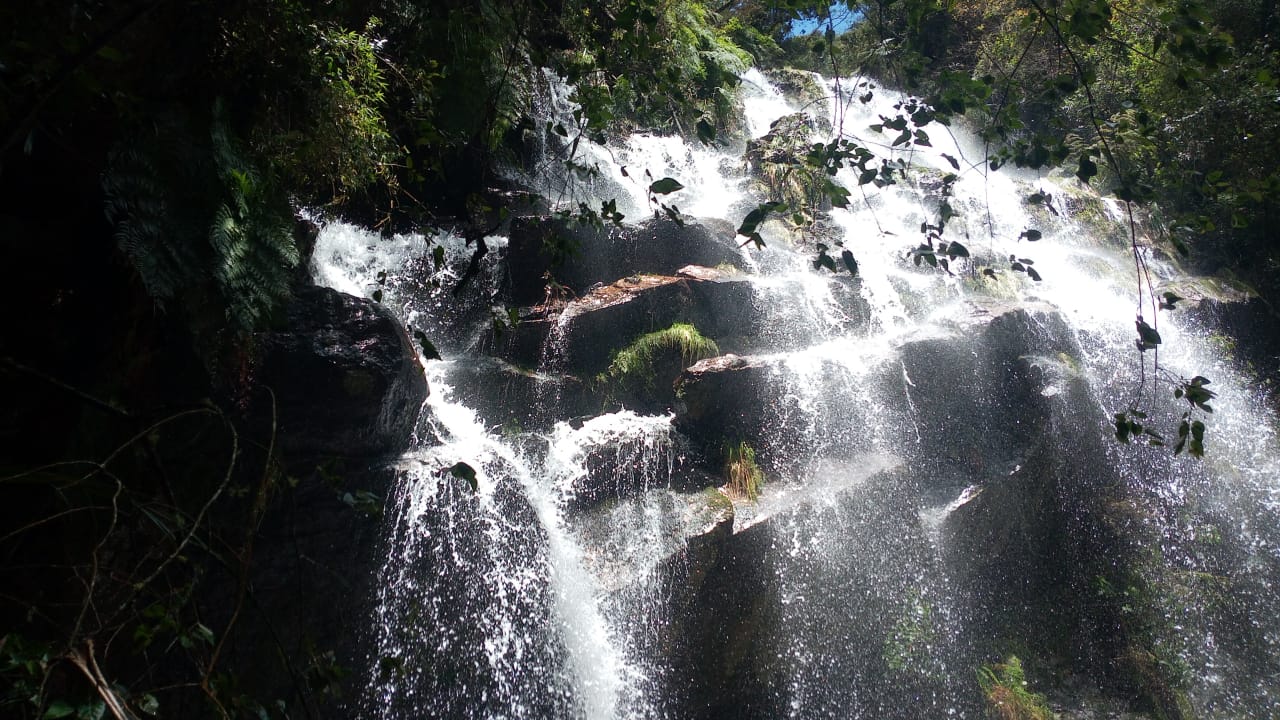Countries<Colombia<Andina<Bogotá< La quebrada Las Delicias
Upon reaching the Sabana de Bogotá, in the Cundiboyacense Altiplano at 2,600 meters above sea level, the majestic Eastern Hills that extend from south to north for 52 kilometers to a height of more than 800 meters are observed as a backdrop. They are part of an ecological structure of the central region of the Eastern Cordillera, with the largest number of paramos, natural water manufactures that are born in the Chingaza National Park - Production Forest Reserve Area. The Muiscas, an indigenous people of farmers, settled part of their population in areas adjacent to the eastern hills, their worldview, respectful of nature and the sacred value of the hills, without infringing any damage to the ecological system of the high Andean forest. The arrival of the conquerors brought with it the alteration of the ecosystem, the destruction of important areas of native forest at the foot of the slope and an irrational forestry and mining exploitation, negatively impacting the ecosystem. At the foot of the hills around 1830, the city spread to the north to the town of Villorrio, home of the Zapatero Antón Hero married to the daughter of the chief Usaquén. He designed some funny protective footwear platforms "Los Chapines" avoiding contact with the water from the muddy meadows of the site that later took the name of Chapinero. There, as a blessing, the 40-meter-highest waterfall in the Eastern Hills is called Quebrada las Delicias, because on its banks Palacetes and Quintas were built, places in which the Bogotá Society, the Cachacos gathered to dance and dance, not in vain they called it the place where Love is born. Today it is part of the Protective Reserve of the Eastern Hills and the splendor of the sound of water, Quebrada las Delicias is a recovered environmental trail and a must for walkers and hikers every day of the year. Come to Bogotá and take a picture of this charming place where the Goddess of Water Muisca SIE- will always accompany you.
Al llegar a la Sabana de Bogotá, en el Altiplano Cundiboyacense a 2.600 msnm, se observa a lo lejos como Telón de Fondo los majestuosos Cerros Orientales que se extienden de sur a Norte por 52 kilómetros hasta una altura de más de 800 metros. Hacen parte de una estructura ecológica de la región central de la Cordillera Oriental, con el mayor número de paramos, fabrica natural de agua que nacen en el Parque Nacional Chingaza - Área de reserva Forestal productora. Los Muiscas, pueblo indígena de agricultores asentó parte de su población en áreas colindantes con los cerros orientales, su cosmovisión, respetuosa de la naturaleza y al valor sagrado de los cerros, sin infringir daño alguno al sistema ecológico del bosque altoandino. La llegada de los conquistadores trajo consigo la alteración del ecosistema, la destrucción de importantes áreas de bosque nativo del pie de ladera y una irracional explotación forestal y minera, impactando negativamente el ecosistema. A los pies de los cerros hacia 1830, la ciudad se extendió al Norte al poblado del Villorrio, hogar del Zapatero Antón Hero casado con la hija del cacique Usaquén . El, diseño unas graciosas plataformas protectoras del calzado ” Los Chapines” evitando el contacto con el agua de las praderas fangosas del sitio que luego tomo el nombre de Chapinero. Allí, como una bendición , la caída de agua de 40 metros mas alta de los Cerros Orientales es , llamada la Quebrada las Delicias ,porque a sus orillas se construyeron Palacetes y Quintas, lugares en los cuales la Sociedad Bogotá , los Cachacos se reunían a danzar y bailar, no en vano lo llamaban el sitio donde nace el Amor. Hoy en día es parte de la Reserva Protectora de los Cerros Orientales y el esplendor de sonido de agua , Quebrada las Delicias es un sendero ambiental recuperado y recorrido obligado para caminantes y senderistas todos los días del año. Venir a Bogotá y llevarse una imagen de este sitio encantador en que la Diosa del Agua Muisca SIE- siempre te acompañara.
